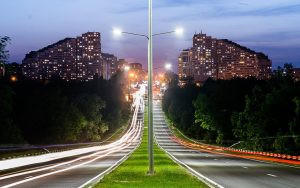Transparent LED screens represent a cutting-edge innovation in the field of display technology, offering a blend of visibility and transparency that is transforming how information and advertisements are presented. These screens are being increasingly adopted across various industries, from retail and advertising to corporate settings and public installations. This comprehensive article delves into the technology behind transparent LED screens, their benefits, key manufacturers, applications, market dynamics, challenges, and future trends.
Understanding Transparent LED Screen Technology
Transparent LED screens use light-emitting diodes (LEDs) arranged in a grid on a transparent substrate, allowing light to pass through gaps between the LEDs. This design maintains the screen’s transparency while still displaying vivid images and videos. Key components include:
- LED Chips: These tiny light sources are strategically placed to ensure minimal obstruction of light.
- Transparent Substrate: Often made of glass or clear acrylic, this substrate supports the LEDs while allowing light to pass through.
- Driver ICs: Integrated circuits control the electrical current to the LEDs, ensuring consistent brightness and color.
- Control Systems: Advanced software and hardware manage the display output and content delivery.
Benefits of Transparent LED Screens
1. Aesthetic Appeal
Transparent LED screens provide a sleek and modern look, seamlessly integrating into various environments without obstructing views. This aesthetic appeal makes them ideal for high-end retail stores, corporate lobbies, and architectural installations.
2. Enhanced Visibility
These screens allow viewers to see the content displayed on the screen while still being able to look through it. This feature is particularly useful for store windows, museums, and other applications where maintaining visibility is crucial.
3. Energy Efficiency
Transparent LED screens typically consume less power than traditional LED displays due to the reduced number of LEDs and the efficient control systems used. This energy efficiency translates into lower operating costs.
4. Versatility
The transparency and flexibility of these screens enable them to be used in a variety of shapes and sizes, fitting seamlessly into different architectural designs and spaces.
5. Engagement and Interactivity
Transparent LED screens can be integrated with touch sensors and other interactive technologies, enhancing user engagement and providing dynamic experiences for viewers.
Key Manufacturers of Transparent LED Screens
Several companies are leading the way in the development and production of transparent LED screens, offering innovative solutions and high-quality products.
1. LG Electronics
LG is a pioneer in transparent display technology, offering a range of transparent LED screens known for their clarity, brightness, and reliability. Their products are widely used in retail, corporate, and public spaces.
2. Samsung Electronics
Samsung’s transparent LED screens are known for their high resolution and excellent color reproduction. They are commonly used in advertising, retail, and information displays, providing stunning visual experiences.
3. Planar Systems
Planar is a leading manufacturer of digital display technology, including transparent LED screens. Their products are renowned for their durability, performance, and versatility, making them suitable for a wide range of applications.
Market Dynamics and Trends
The market for transparent LED screens is evolving rapidly, driven by technological advancements and increasing demand across various sectors.
1. Growing Demand for Innovative Displays
As businesses and organizations seek to differentiate themselves and engage audiences in new ways, the demand for innovative display solutions like Transparent LED screen is growing. This trend is particularly strong in retail, advertising, and corporate sectors.
2. Technological Advancements
Continuous improvements in LED technology, materials, and control systems are enhancing the performance and reducing the costs of transparent LED screens. Innovations such as MicroLED and MiniLED are further pushing the boundaries of what these screens can achieve.
3. Sustainability and Energy Efficiency
With increasing awareness of environmental sustainability, the market is seeing a growing preference for energy-efficient display technologies. Transparent LED screens, with their lower power consumption, align well with this trend.
4. Customization and Flexibility
The ability to customize transparent LED screens in terms of size, shape, and resolution is driving their adoption in diverse applications. This flexibility allows for creative and unique installations that meet specific needs and aesthetic preferences.
5. Integration with Smart Technologies
Transparent LED screens are being integrated with smart technologies such as IoT, AI, and interactive systems, enhancing their functionality and providing more engaging user experiences. This integration is particularly relevant in smart cities, retail, and corporate environments.
Challenges in the Transparent LED Screen Market
Despite the promising trends, the market for transparent LED screens faces several challenges:
1. High Initial Costs
The initial cost of transparent LED screens can be relatively high, which may deter some potential users. However, the long-term benefits and energy savings often justify the investment.
2. Technological Complexity
The production and maintenance of transparent LED screens involve complex technologies and processes. Ensuring high-quality manufacturing and reliable performance requires significant expertise and investment.
3. Limited Awareness and Understanding
Many potential users are not fully aware of the benefits and capabilities of transparent LED screens. Increasing awareness and understanding through education and marketing is essential to drive adoption.
4. Durability and Maintenance
Ensuring the durability and easy maintenance of transparent LED screens, especially in outdoor or high-traffic environments, can be challenging. Manufacturers must focus on robust designs and reliable performance.
5. Regulatory Compliance
Compliance with environmental and safety regulations is a growing concern. Manufacturers need to invest in sustainable practices and technologies to adhere to these regulations and meet market expectations.
The Future of Transparent LED Screens
The future of transparent LED screens looks bright, with several exciting developments on the horizon:
1. Advancements in LED Technology
Ongoing advancements in LED technology, including the development of MicroLED and MiniLED, will enhance the performance, resolution, and energy efficiency of transparent LED screens. These innovations will open up new possibilities for applications and installations.
2. Increased Customization and Personalization
The trend towards customization and personalization will continue, with manufacturers offering more options for tailoring transparent LED screens to specific needs and preferences. This trend will drive adoption in niche markets and unique applications.
3. Enhanced Interactivity
The integration of interactive technologies, such as touch sensors, gesture recognition, and AI, will make transparent LED screens more engaging and functional. These enhancements will be particularly valuable in retail, corporate, and public information applications.
4. Global Market Expansion
As the benefits of transparent LED screens become more widely recognized, their adoption will increase globally. Emerging markets in Asia, Africa, and Latin America offer significant growth opportunities, driven by urbanization and rising demand for advanced display technologies.
5. Sustainable Practices
With a growing focus on sustainability, transparent LED screens will become more eco-friendly, incorporating energy-efficient components and materials. This focus on sustainability will align with broader environmental goals and regulations.
Conclusion
Transparent LED screens are at the forefront of display technology, offering a unique combination of transparency and high-quality visuals. Their versatility, aesthetic appeal, and advanced features make them ideal for a wide range of applications, from retail and corporate settings to public spaces and architectural installations. As technology continues to evolve and market awareness increases, the adoption of transparent LED screens is set to grow, revolutionizing the way we present information and engage with audiences. With ongoing advancements and a focus on sustainability, the future of transparent LED screens promises even more exciting possibilities and innovations.
4o




